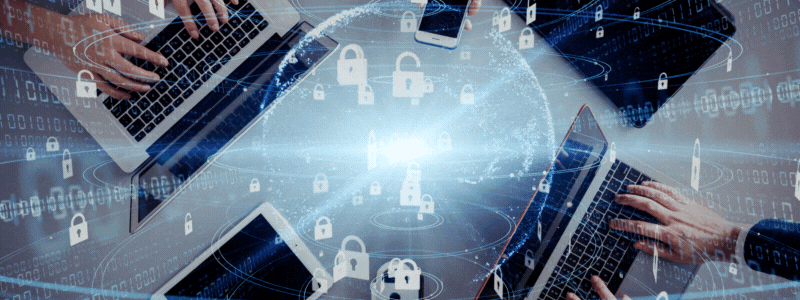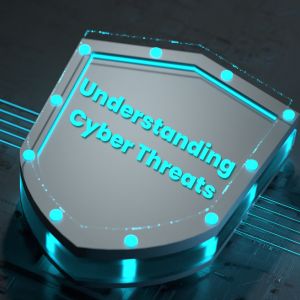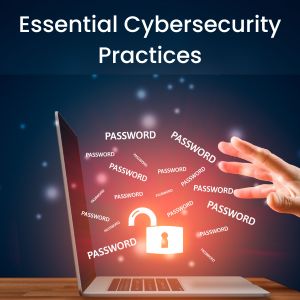Announcement
Get Ready for INDUS CUP 2K26! | Dates: 5–10 January 2026 | Stand a Chance to Win Cash Prizes up to ₹10,00,000!...Read more Get Ready for INDUS CUP 2K26! | Dates: 5–10 January 2026 | Stand a Chance to Win Cash Prizes up to ₹10,00,000!
We are excited to announce the Indus Hackathon 2025, an exhilarating one-day event organized by the CSE Department of Indus University....Read more We are excited to announce the Indus Hackathon 2025, an exhilarating one-day event organized by the CSE Department of Indus University.
26th ISTE Faculty Annual State Convention will be held at Indus University on April 27, 2023....Read more 26th ISTE Faculty Annual State Convention will be held at Indus University on April 27, 2023.
Get Ready for INDUS CUP 2K26! | Dates: 5–10 January 2026 | Stand a Chance to Win Cash Prizes up to ₹10,00,000!...Read more Get Ready for INDUS CUP 2K26! | Dates: 5–10 January 2026 | Stand a Chance to Win Cash Prizes up to ₹10,00,000!
We are excited to announce the Indus Hackathon 2025, an exhilarating one-day event organized by the CSE Department of Indus University....Read more We are excited to announce the Indus Hackathon 2025, an exhilarating one-day event organized by the CSE Department of Indus University.
26th ISTE Faculty Annual State Convention will be held at Indus University on April 27, 2023....Read more 26th ISTE Faculty Annual State Convention will be held at Indus University on April 27, 2023.

The all-presence of cyber dangers in the modern age of digitization puts both people and organizations at serious risk. Cyber security precautions are essential for protecting private data, avoiding financial loss, and upholding a reliable reputation. This article discusses related issues that emphasize the value of cybersecurity and illustrate how it may shield you and your company from online dangers.
An overview of numerous cyber threats, including malware, phishing, ransomware, and social engineering, is provided in this section. It describes each threat's mechanisms and the possible dangers it poses to people and organizations.
With the changing technology world comes new cyber risks. This section examines unknown threats, such as supply chain hacks, IoT susceptibilities, and assaults using artificial intelligence. Understanding these risks is crucial for maintaining proactivity and implementing proper cyber security safeguards.

This section emphasizes the importance of cybersecurity in the current digital era. It highlights how cyber risks can lead to financial losses, reputational harm, legal issues, and the compromise of personal information. It also examines how advanced and frequent cyberattacks are growing, emphasizing the importance of strong cybersecurity practices.
Both individuals and businesses need to be safe online. This section discusses how cyber security tools can protect users from online dangers. It includes safeguarding individual devices, creating solid passwords, establishing secure browsing habits, and being aware of phishing attempts.
Due to businesses' vast magnitudes of sensitive data, they are particularly susceptible to cyber assaults. The function of cybersecurity in defending enterprises is also discussed in this section. The use of firewalls, intrusion detection systems, secure network setups, routine software updates, and employee training initiatives are covered. It also highlights the value of data backup and incident response plans.
This section contains ideas and best practices for enhancing people's and businesses' cybersecurity poses. It addresses topics including using multi-factor authentication, encrypting private information, updating software often, conducting vulnerability scans, and establishing stringent access controls. It also highlights the importance of continuously assessing and enhancing cybersecurity procedures.
Legal and regulatory frameworks and good practices influence cybersecurity. Organizations must abide by the laws and regulations covered in this area to guarantee data security and privacy. The General Data Protection Regulation (GDPR), the California Consumer Privacy Act (CCPA), and legislation individual to particular industries, including the Health Insurance Portability & Accountability Act (HIPAA) for the healthcare business, are among the subjects it addresses.

In a threat environment that is constantly changing, knowledgeable cybersecurity specialists are essential to safeguarding people and organizations. This subtopic will highlight the value of contracting security services or recruiting qualified cybersecurity specialists. It will highlight the importance of continuing education and training for cyber security experts to stay current on new threats and implement suitable security measures.
The fundamental elements of a robust cyber security infrastructure to protect people and organizations will be covered in this subtopic. It will detail how crucial it is to use firewalls, antivirus programmes, intrusion detection systems, and encryption techniques. It will also stress the importance of frequent software patches and improvements for addressing exposures and protecting against new dangers.
The main topic of this subtopic will be the best methods for safeguarding networks and preventing unauthorized access. It will address two-factor authentication, network segmentation, and strong password policies. It will also go over how crucial it is to monitor network activity, spot anomalies, and act swiftly in case a security breach occurs.
We'll delve into the crucial facets of data protection and privacy in this subtopic. It will go over how to put data backup plans into practice and encrypt and store data securely. It will also cover the relevance of adhering to data security laws like the General Data Protection Regulation (GDPR) and the importance of protecting sensitive and personal data.
This subtopic will emphasize the significance of developing a cybersecurity awareness culture within a company. It will look at the potential for employee education programmes to inform staff about typical internet threats, including phishing and social engineering. To reduce the possibility of security breaches caused by human mistakes, it will also emphasize the importance of staff members following security policies and procedures.
This subtopic will concentrate on the significance of having a clear incident response strategy to deal with and minimize cyber incidents. The crucial incident response processes will be covered, including recognizing the occurrence, limiting its impact, eliminating the threat, and recovering systems and data. It will also review the value of post-event analysis in detecting weaknesses and enhancing future incident response initiatives.
This subtopic will provide light on current cyber security trends and rising technology. It will describe how machine learning (ML) and artificial intelligence (AI) are used to identify and counteract cyber threats. Additionally, it will discuss the growing significance of protecting mobile applications, cloud-based platforms, and Internet of Things (IoT) gadgets. It will also cover how crucial it is to keep abreast of the most recent cybersecurity news and trends to defend against ever-evolving attacks proactively.
Explains the importance of employing multi-factor authentication (MFA) and adopting secure passwords. Provides helpful advice for generating strong passwords and emphasizes the advantages of MFA in preventing unauthorized access.
Highlights the value of updating systems and software to fix exposures. explains the dangers of employing out-of-date software, and offers instructions for putting good patch management practises into practice.
Identifies the need for thorough cybersecurity training and the role of employees as potential targets. Discusses the value of establishing a cybersecurity-aware culture within the organization, supporting good security practises, and boosting public knowledge of common dangers.

Losing data can have disastrous effects for both persons and corporations. This section emphasizes the significance of consistent data backups and the deployment of a comprehensive recovery strategy. It describes various backup techniques and emphasizes the value of off-site backups for additional security.
A significant contributor to cybersecurity breaches is human mistakes. This part emphasizes the importance of thorough employee training programmes instructing personnel on spotting and reporting suspicious activity and identifying and avoiding potential dangers. Additionally, it encourages a cyber security-aware culture throughout the company.
Data security depends on limiting access to sensitive information and executing effective privilege management. This section explains the significance of role-based access controls (RBAC), robust user authentication, and routine user privilege reviews to prevent unauthorized access.
Despite precautions, cyber disasters still have the potential to happen. The need to have a clear incident response plan and efficient catastrophe recovery plans is emphasized in this section. Identification, containment, eradication, and recovery are only a few of the essential elements of incident response that are covered.
Businesses must regularly check their systems for openness since cyber threats multiply. This section discusses the significance of performing regular vulnerability assessments, penetration tests, and security audits to spot and fix problems quickly.
Many firms require more excellent internal skills and resources to tackle cyber security. This section examines the advantages of outside security services, such as managed security service providers (MSSPs) or cybersecurity consultants, to strengthen their security posture.

Examines the importance of utilizing trustworthy antivirus and anti-malware programmes. Explains how these technologies can stop possible damage by detecting and reducing several types of harmful software.
Emphasizes the importance of firewalls and other network security measures in preventing unauthorized access to company networks. Explain the many firewall types and how they work to stop online incursions.
Examines the idea of encryption and how it helps to protect sensitive data. The advantages of using encryption to protect data in transit and at rest, as well as encryption techniques and secure communication channels.
These cybersecurity tools and techniques protect people and companies from online dangers. By using antivirus and anti-malware software, businesses can identify and eliminate harmful software, lowering their gamble of data loss, economic loss, and reputational damage. Firewalls and network security measures provide a strong defence against unauthorized access and protection from sensitive information getting into the wrong hands. Data protection and encryption methods increase security by rendering data unreadable to unauthorized parties. Protecting precious assets and fostering consumer and client confidence are two benefits of implementing these cybersecurity solutions and technology.
Cyber threats constantly change and present severe risks to people and enterprises. For protecting sensitive information, ensuring operational continuity, and preserving your company's reputation, it is essential to comprehend the relevance of cybersecurity and put suitable safeguards in place. You may reduce cyber dangers and guarantee a secure digital environment for yourself and your company by adhering to best practices, utilizing cutting-edge technologies, and developing a cybersecurity-conscious culture.